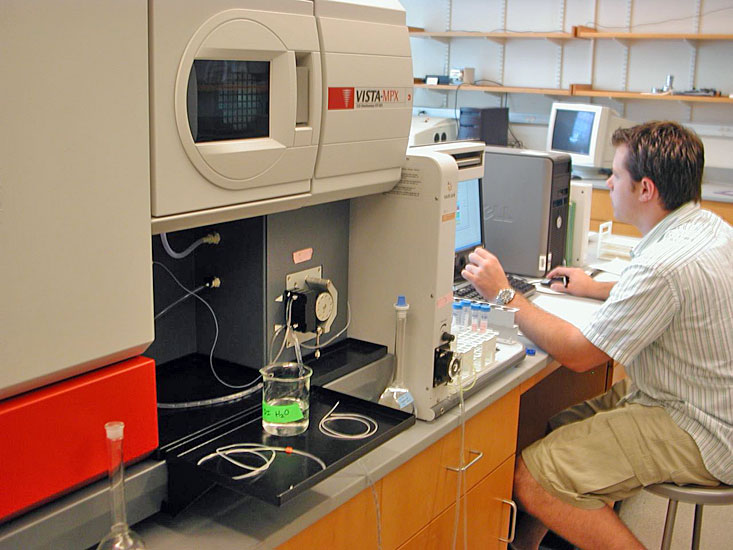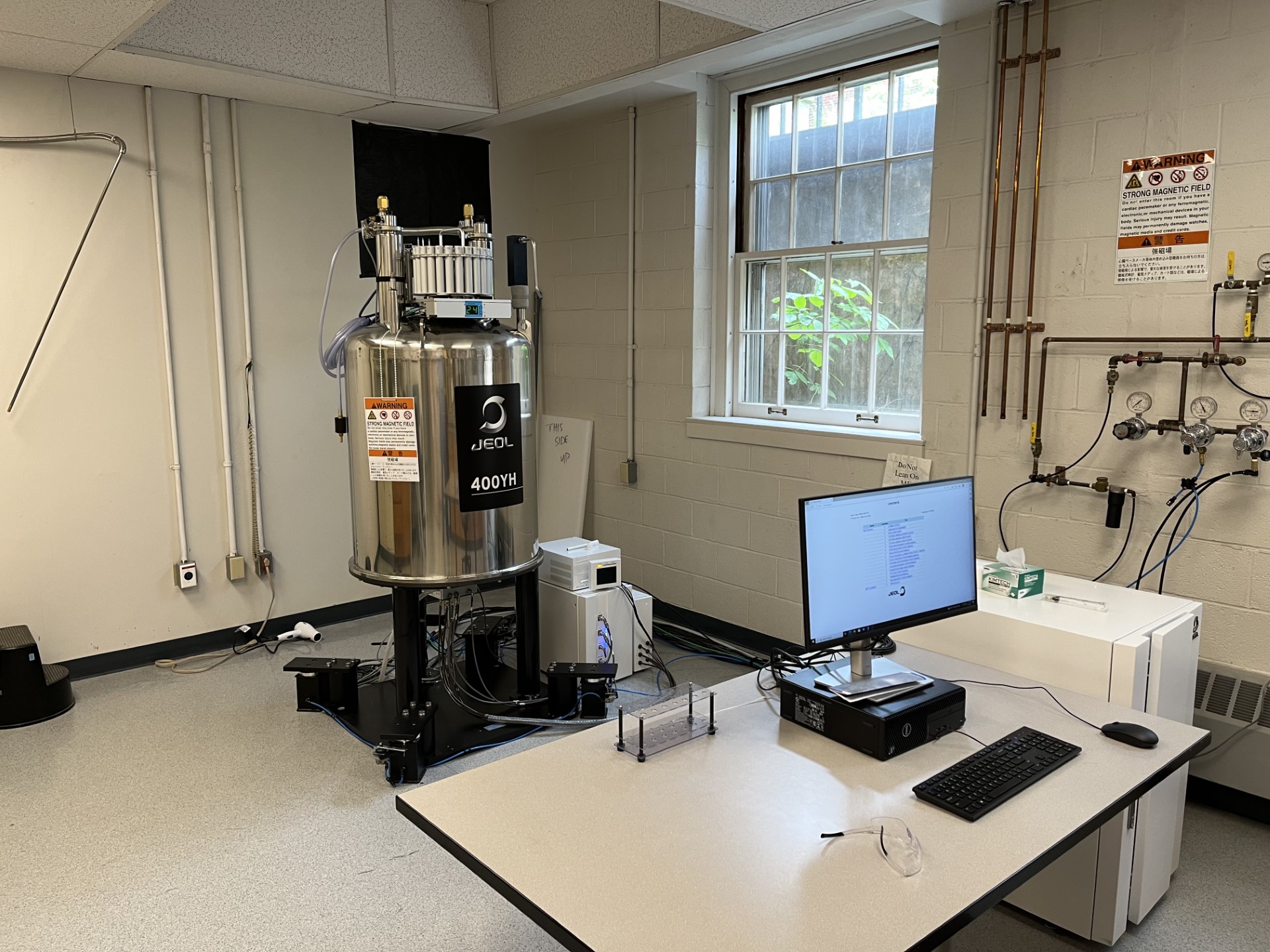What is it?
An NMR spectrometer is an instrument that uses a high field (9T) superconducting magnet and frequency inputs to measure the energy required to change the magnetic alignment of nuclei that have magnetic dipole moments (typically spin = 1/2 nuclei such as 1H, 13C, 19F, 31P, and others). The energy depends on the type of nuclei and the chemical environment (i.e., connections to other atoms).
The high-resolution NMR at Bowdoin is used by students taking Organic Chemistry I and II, Molecular Structure Determination, Instrumental Analysis, and Physical Chemistry laboratory. The instrument is heavily used by students for their research projects.
Applications:
NMR spectroscopy is a powerful instrument that is used to verify structures (connectivity and geometries) of new molecules, to assess reaction yields, and to measure rates of dynamic processes. NMR is often used in conjunction with other techniques (mass spectrometry and infrared spectroscopy) for unknown structure determinations.
Bowdoin Users:
The high-resolution NMR at Bowdoin is used by students taking Organic Chemistry I and II, Molecular Structure Determination, Instrumental Analysis, and Physical Chemistry laboratory. The instrument is heavily used by students for their research projects.

